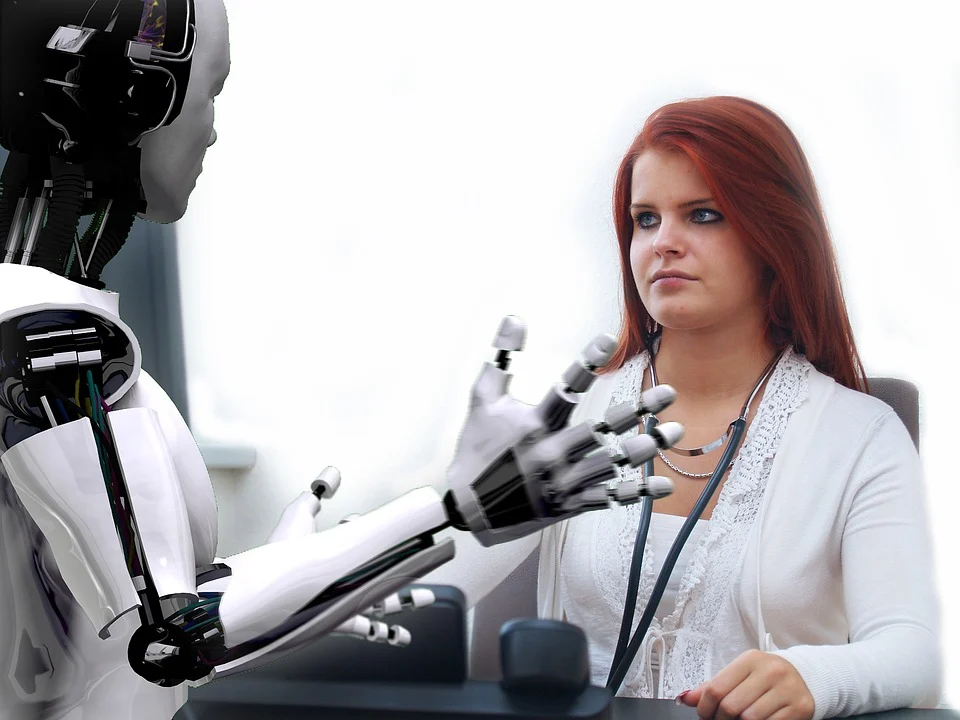
From the medical droids in Star Wars to Star Trek’s Emergency Medical Hologram, robotics and artificial intelligence have long been part of science fiction. When it comes to healthcare imaging equipment, you don’t need a hypospray or a tricorder to take advantage of this kind of technology. Thanks to advances in robotics and artificial intelligence (AI), yesterday’s science fiction is quickly becoming today’s common practice in new and exciting ways, impacting everything from medical imaging equipment to supply chain management.
Advanced Healthcare Solutions with a Human Touch.Applications for Robotics and AI in Healthcare
Robotics isn’t just for car factories anymore, nor do you need to brush up on Asimov to understand how AI can improve healthcare.
How Robotics is Changing Healthcare
It won’t be long before our medical equipment installation includes robots. Robotics has had an outsized impact on healthcare. At one extreme, they’ve become sensitive and advanced enough to be used for remote surgery using telehealth apps and robots capable of a degree of precision even the best human surgeon cannot match. At the other end of the spectrum, robots are also delivering supplies, cleaning medical suites, and taking on vital tasks like improving the speed and accuracy of order picking and prescription filling.
How AI is Changing Healthcare
As important as robotics are to modern healthcare, the new look of smarter healthcare may not be a cheery pixelated face or a precise robotic arm. Instead, it might be a series of zeroes and ones underpinning everything from medical devices to advanced medical X-ray equipment to record-keeping, comparing the results from ultrasound equipment over time, and long-term care planning. Among the ways artificial intelligence is already changing healthcare:
- Leveraging the IoMT (internet of medical things, including devices like insulin monitors and other wearables) to improve patient health
- Using predictive modeling to improve early detection of many conditions
- Improving diagnostics that combines digital medical imaging and records with machine learning to encompass a broad range of medical learning and patient experience
- Devising comprehensive care plans that boost medication and treatment adherence while improving patient outcomes
- Improving research and training to boost the human element in healthcare
How Can Your Practice Benefit from AI and Robotics?
Both robotics and artificial intelligence have evolved to a point where their use is no longer either/or; it’s both/and since AI is being combined with robotics in ways that leverage the best of both. To cite just a few examples:
- Companionship: Robots that take the form of anything from a tiny human to an adorable robotic dog can provide additional socialization outlets for patients, especially those whose condition or illness might otherwise leave them isolated.
- Safety: One thing we’ve learned from COVID is that humans are capable of tremendous bravery born of compassion; we’ve also seen, firsthand, the risks posed to human caregivers and their patients alike. Using robots for common clinical tasks like monitoring, diagnostics, and even disinfection can keep everyone safer.
- Rehabilitation: Exoskeletons, once the province of eccentric comic book billionaires are now being used to help patients re-learn how to walk or undertake ADLs (Activities of Daily Living), or to improve safety when it’s helpful to augment human capabilities.
Looking ahead, it’s not hard to see how robotics and AI can find still more applications. Every vet or vet tech we’ve ever spoken to, for instance, has multiple stories about panicked animals who were difficult to control or caused injury to their caregivers; robotics can maintain a high-touch standard of care, albeit at a safe remove. AI and robotics can also help to combat feelings of loneliness and isolation felt by many seniors and those in the disabled community.
Are There Disadvantages to Robotics and AI in Healthcare?
For all their promise, robotics and AI aren’t without their downsides. For example, while robotics would theoretically free up time for physicians to see patients, there are fears that the healthcare industry’s profit motivation will demand ever-growing volume and growth. This, in turn, may simply result in even more of an assembly line mentality than already exists.
AI has its potential pitfalls as well. After all, artificial intelligence relies on algorithms still built on biases “learned” from their programmers, which can, in turn, reinforce prejudices that undermine patient outcomes, particularly in historically underserved communities. While there’s significant promise in these new technologies, there’s also an accompanying need to shine light into these darker corners, learn from what we find, and always strive to do better.
Healthcare and Diagnostics, Evolved
Over our decades of service to the Detroit area and beyond, Great Lakes Imaging has seen many changes in healthcare technology. We take pride in helping our customers chart a way forward by offering cutting-edge equipment alongside custom medical equipment solutions. We would love to help you do the same. Why not call us today?
